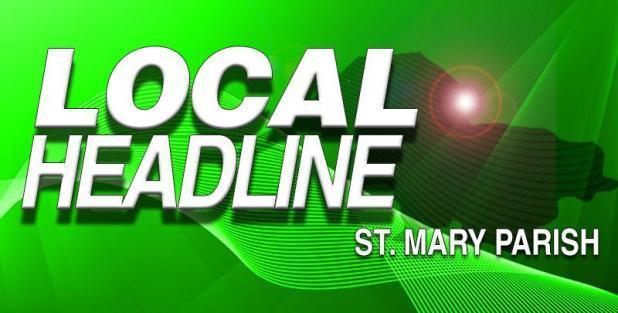
From the Editor: La. watches COVID-19 for trouble signs
The daily number of new COVID-19 cases posted Saturday by the Louisiana Office of Public Health may have caused people to slap their computers or do a quick refresh.
The noon Saturday number of new cases in the previous 24 hours was listed as 1,288. If you’ve been following the daily numbers, you’ll know that’s a big number, like the ones we saw in early April when the number of statewide cases were growing 20% or 30% each day.
As Louisiana people took measures to protect themselves, the numbers fell gradually until they were below 300 new infections some days.
Then came Saturday, after Louisiana had already eased many anti-COVID-19 restrictions, and the 1,288 report.
The Office of Public Health pointed out that a large number of backlogged cases, 560, some dating back to April, were slow to make their way from commercial labs into the state database.
That’s happened at least two times before as new commercial labs joined the testing effort.
But even without the backlogged cases, the count for Saturday was 728, maybe double what we were getting a couple of weeks ago. And that number was posted while at least 14 states, and maybe as many as 25, were reporting spikes in numbers of new cases or hospitalizations.
That's enough to make people wonder if the country is moving too fast as it lifts economic restrictions and stay-at-home orders.
At least as far as Louisiana is concerned, the answer seems to be no for now.
Dr. Alex Billioux, the assistant Department of Health secretary who accompanies Gov. John Bel Edwards at the now-weekly coronavirus press conferences, said Wednesday that you’d expect the number of cases to go up as the amount of testing increases. Louisiana managed to beat its goal of 200,000 new tests in May, doubling the amount of tests that had been performed up to then.
The troubling development would be new hospitalizations that track along with the increase in new cases, Billioux said. Something like that has been happening, to great or lesser degrees, in the areas around Monroe, Alexandria and Lake Charles.
But statewide, the number of people in hospitals to be treated for COVID-19 has slipped below 600. The number of people on ventilators is below 75.
It’s clear, at least for now, that Louisiana didn’t see the spike in cases that would overwhelm hospital resources, the spike that motivated public health officials to urge us to “flatten the curve” by wearing masks, avoiding groups and staying home.
Some people will see that result and say the precautions worked. Some will say it shows the fear of COVID-19 was overblown from the start.
My Facebook feed will sometimes include a post from someone who takes the “it isn’t that bad” position. One recently wondered if we’ll close down the economy for flu from now on because, the poster said, the mortality rate from flu is higher than for COVID-19.
But is that true?
The Centers for Disease Control website says that over the last decade, flu killed 20,000-40,000 people most years. In 2011-12, it was only about 12,000. But let’s take the worst case: 2017-18, when 61,099 died.
Public health officials often express disease death rates in deaths per 100,000 members of the population. The rate for U.S. flu deaths in 2017-18 was about 19 per 100,000 people.
Now let’s look at COVID-19.
Locally, St. Mary, St. Martin and Assumption parishes, where this paper circulates, have a combined population of about 130,000. The OPH says 74 residents of those parishes have died from COVID-19.
You’ll also see some social media scuttlebutt about how the numbers are inflated for political reasons or because hospitals get reimbursed more for treating COVID patients. So let’s say, just to be saying, that state public health officials, officials in three parishes, testing labs, and three or four hospitals are up to their necks in an insanely complicated deep state plot. Let’s say they’ve somehow conspired to inflate the number of COVID deaths here by a factor of two.
That would give the three local parishes 37 actual COVID-19 deaths. So the COVID death rate here would be 28.5 deaths per 100,000, nearly one-third higher than the worst U.S. flu death rate in the last decade.
Assuming the OPH death records are accurate, the COVID death rate in St. Mary, St. Martin and Assumption is actually 57 per 100,000.
Keep in mind that the COVID-19 deaths happened in less than three months. A flu season lasts from October to May.
Flu vaccines have been around forever, and doctors know how to treat flu. We have no COVID-19 vaccine yet, and the treatments have been put together as the doctors went along.
Most of the COVID deaths have occurred despite school closures, business closures, travel limits, masks, limits on crowd sizes, stay-at-home orders, and bans on visitors at hospitals and nursing homes. During the flu season of 2017-18, there were some isolated school closures.
Our area isn’t the hardest-hit part of Louisiana, and Louisiana is no longer one of the country’s hottest hot spots for COVID-19.
Who can say at this point whether Louisiana made all the right moves when the coronavirus came along? But one is sure enough: COVID-19 isn’t just another bug.
Bill Decker is managing editor of The Daily Review.
